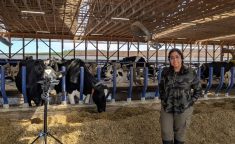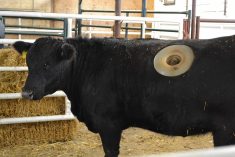North Dakota spring wheat looking good
REUTERS Hard red spring wheat yields in southeastern North Dakota were below last year’s record levels but still well above average after near-perfect weather conditions, scouts on annual tour found last Tuesday.
“Even though it is warm, it has not been hot,” said Terry Weckerly, a farmer and president of the North Dakota Grain Growers Association.
A survey of four fields in southeastern North Dakota projected hard red spring wheat yields at 44 bushels per acre, down from 44.7 in 2009, according to scouts on the Wheat Quality Council’s annual spring wheat tour. The five-year average for the route which runs through counties was 35.3 bushels per acre.
Read Also

Moo translator and methane measures: There’s an app for that
Dalhousie University researchers use artificial intelligence to create new dairy farm apps that analyze cattle sounds and measure methane.
Along another route in southwest North Dakota, scouts projected hard red spring wheat yields at 39.2 bushels per acre, based on a survey of three fields in Stark and Dunn counties. A year ago in that area, yields were calculated at 44.7 bushels per acre.
A survey of two durum fields projected yields along the same route at 32.1 bushels per acre.
The tour of the enture state was to end last Thursday.
Japan lifts foot-and-mouth transfer ban
REUTERS Officials of Japan’s southern prefecture of Miyazaki last week lifted the last ban on transfers of animals three months after outbreaks of foot-and- mouth disease, paving the way for resumption of exports of beef and pork.
Miyazaki lifted a state of emergency that ran more than two months, and lifted all curbs on moving cattle, after about 290,000 pigs and cattle were slaughtered to contain the disease.
Japan suspended exports of beef and pork after the outbreak of the epidemic except for some made on a case-by-case basis following consultations with individual authorities, such as Hong Kong and Macao.














